EDITHBURGH JETTY - South Australia
Just how far would you travel to reach the pot of gold at the end of the rainbow? Well, for divers in South Australia that distance is about 300kms or approximately 3 hour’s drive from Adelaide. The gold can be found on Yorke Peninsula in the sleepy town of Edithburgh – at the end of the main street, under the Jetty.
Folklore tells us that at the end of every rainbow there is a pot of gold – but what IF that pot of gold IS a rainbow – a veritable kaleidoscope of colours and critters. That’s what you’ll find when you dive one of the best of the many Jetties that South Australia has to offer – Edithburgh Jetty. Instead of Leprechauns and shamrocks you’ll discover Leafies and Frogfish and a forest of candy-coloured pylons to explore.

Ok, so you will need to take a leap of faith to make that trip if you have never been before. Admittedly the trip down there isn’t exactly awe-inspiring. Grain and Canola fields seem to roll on for days and the skies can often be grey and tumultuous. Halfway you start thinking to yourself “Where the hell am I?!” and “Is this really worth it!? – It’s much warmer at home!!” But as far as winter dive destinations go, Edithburgh is the place to be! It may be grey skies and sleepy streets above, but it’s a thriving, colourful metropolis below with an abundance of sea creatures and a rainbow of competing colours to warm and inspire you.
Looking on the map Edithburgh is located at the southeast end of Yorke Peninsula. Not the first place you would think for world class macro diving – but you could spend days exploring this Jetty and still find something new every dive.
There’s been many a dive where I’ve hardly made it more than a few pylons down after a few hours of diving – there’s just so much to see. When the conditions are right, it really is that good!
So, what makes Edithburgh Jetty the pot of gold AND the rainbow? Well, it has a lot to do with its location in the Great Southern Reef and its structure and the life this combination brings.

With a good set of lungs and a decent tank of gas you can easily push toward a three-hour dive here as the depth ranges from a couple of meters to approximately eight at the end of the Jetty.
Sitting at the bottom of Yorke Peninsula Edithburgh Jetty dips it’s Pylons into the nutrient rich waters of the Great Southern Reef. Powerful southern upwellings of the Flinders current bring an abundance of nutrients to feed the thriving community under the Jetty and the Leeuwin Current from the west brings relative warmth to this unique bioregion. The resulting outcome is an area high in biodiversity and abundant in endemic species – meaning you can dive here and see a concentration of familiar species as well life found nowhere else!

The structure of the Jetty is also a reason why life under the Jetty exits here to such intensity. Built in 1873 and located right at the very end of the main street the Jetty was built to service the export trade of salt, gypsum and lime and later, grain. It became the third busiest port in the state. Large companies quickly set up business in town – the Jetty being the lifeblood of trade exporting to Adelaide, Australia and New Zealand. It saw a lot of action! It was built for it too. Sturdy and wide to allow for carts and horses heavily laden with cargo, as well as steam and tall ships to dock.
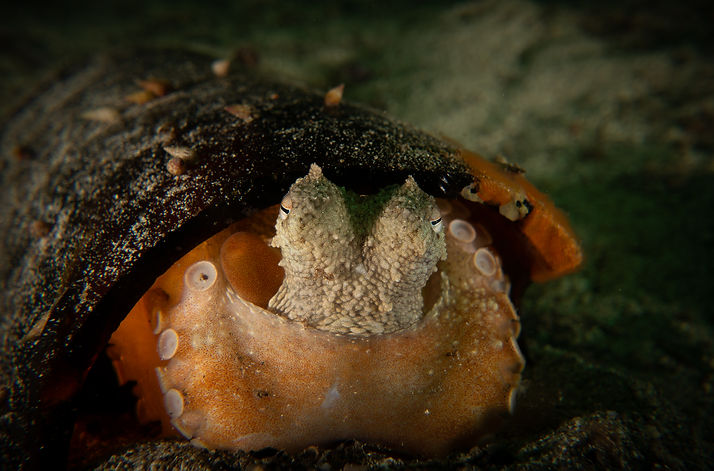
In its prime it was criss-crossed with rail tracks all busy loading the ships. It was built relatively low to the water too. This width and low clearance are what sets life underneath this Jetty apart from others, as it blocks out a lot of direct sunlight underneath it. No chance for kelps that need to photosynthesize to flourish – instead filter feeding sponges, mussels and ascidians dominate all but a few of the outer pylons, bringing a mind-boggling array of colours and shapes to this underwater world. These sessile invertebrates eking out life on the pylons create homes and habitat for the many other creatures, seeking food and refuge, and are the backbone to what makes this site so superbly unique to dive – over and over again.

Head down to the Jetty any time of the day or night and the local resident fishermen can be seen standing silently, backs to the wind, peering into the waters below. Most are quietly oblivious to the huge variety of life just at their feet. They look perplexed as divers sink into the blue-green waters below. Divers can gear up in the carpark at the top of the Jetty and after a VERY short walk you will find steps either side to enter from. Edithburgh is one of only a handful of diving Jetties that conveniently has entry steps at the BEGINNING of the Jetty. So, no soul-destroying walks that leave you losing the will to live before you start your dive at this site! Just pick the side that is most sheltered from any winds and once your fins are on the discovery begins.
The first time I dived Edithburgh Jetty was 12 years ago. The day after I had become a certified PADI Instructor I took my leap of faith drive and followed my Course Director for the 3-hour trip to the sleepy town for some R&R. My first impressions were mixed. It was dark and gloomy, and all seemed quiet. I felt like I had stepped into a scene from Alien. Razor clams carpeted the bottom under the Jetty and eerily resembled alien, pod-like eggs.
Instead of aliens though, Octopus, Blennies and Frogfish peeked out cautiously. As my eyes adjusted to the light and I familiarised myself with the site I soon became a convert and understood why people came so far to dive this Jetty.
The best way to dive this site is to take your time, travel down one side of the Jetty and back along the other half – simple right?! Easier said than done when curiosity kicks in and you are soon zigzagging all over the place to admire the colours and shapes.
Critter spotting often starts right away with this dive site. If you descend right by the stairs, you might be lucky enough to spot Bobtail and Dumpling Squid buried in the white sands
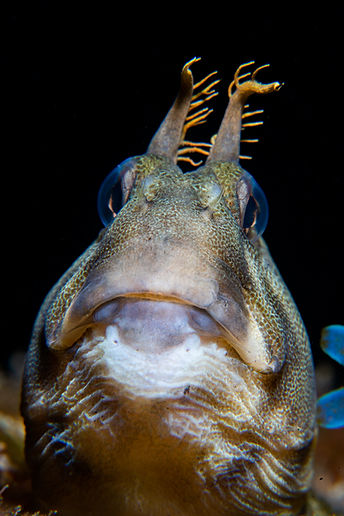
Travelling down the Northern side of the Jetty the dappled light brightens the Seagrasses, and a keen eye will spot the different species of Pipefish all trying to evade detection. Holding themselves upright like a blade of grass you can watch them feeding on tiny mysids that are plentiful in these waters. Good luck photographing them though – a challenge I refer to as ‘shooting moving spaghetti’. Hey – you never know you’ve got patience until you need to use it!
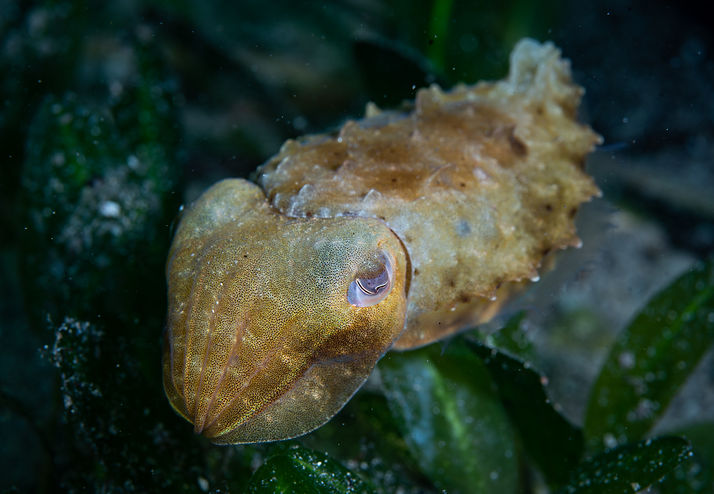
Moving further down the Jetty the depth starts to increase – marginally. It’s another reason why divers love this site. Relative shallow depth allows excellent bottom times. With a good set of lungs and a decent tank of gas you can easily push toward a three-hour dive here as the depth ranges from a couple of meters to approximately eight at the end of the Jetty.

Where the Jetty widens and gets deeper you will come across a band of cork weed that runs north at a right angle to the Jetty – with careful exploration here you might spot a colony of Short-Headed Seahorses or the elegant and exquisitely beautiful Leafy Sea Dragon. Seaward, past the cork weed a large depression dips down to the 8 meter mark. This is the remnant scar left from ships pulling into port and dredging out the bottom over time. Down here is where broken off sponge, kelp, grasses and debris settle. It’s also littered with discarded beer bottles, of which the most select ones have been taken as dwellings by the most discerning Octopus.
The real magic though happens about two thirds of the way down the Jetty, right underneath. The explosion of growth and colour on the pylons will have you craning your next skywards. My first impressions were that it reminded me of the rainbow-coloured popcorn you devoured as a kid. Take a torch with you to bring the true colour of the array of sponge and ascidian species to life – it’s well worth it.
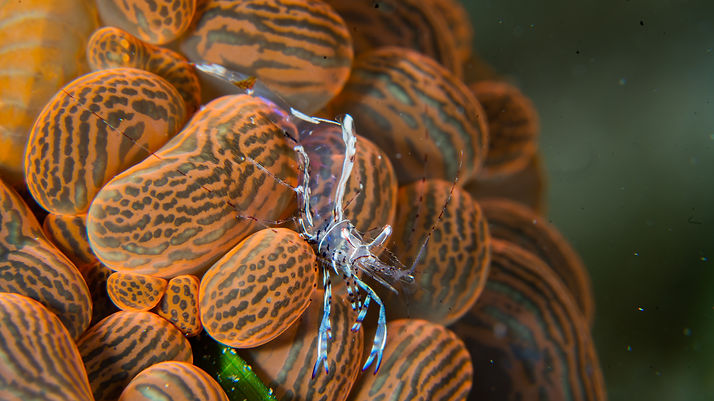
The pylons are spectacular and underpin what makes life so prolific under this Jetty – but for a diver to really see how lively this place can be it pays to make the effort to see it at night. Life goes into overdrive and the real stars come out to play. Poisonous but adorable Striped Pyjama Squid turn up to hunt and mate. Blue Ring Octopus prowl and can be seen swinging like Tarzan through the cork weed in search of their next meal. During the day they are hidden deep in the dead razor clam shells. Bumbling Sponge Crabs amble along hoping to go unnoticed. Warty Prowfish and Velvetfish are amongst a few of the bizarre stars to appear as well as the golf-ball sized Frogfish hidden under the rocky substrate. All to the backdrop of those rainbow pylons – it really is the full cabaret at night.

So now that you’re keen – what are the logistics to diving Edithburgh? It’s best dived on a West or South Westerly wind, and these tend to prevail in Winter in SA – hence why this site becomes diving Mecca in these chilly months. I’ve seen some of the clearest waters here in winter. However – it quickly turns to rubbish if anything Easterly reaches the site. Opportune time to head up to Port Hughes for a dive on those days.
Your nearest dive shop is back in Adelaide, so you need to arrive in town with everything you need to dive. Pack some spares and repairs – it’s a long way to go to have a simple O-ring ruin a dive weekend

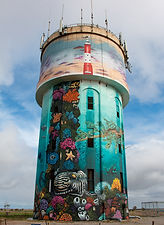
Tanks can be refilled at the local BP service station. Online chat about the quality of the air is a past issue and I have had no problems with the air fills from the current owners. If you are planning a lot of fills, courtesy is to drop in and have a chat about your plans so they can accommodate. They open early – but don’t stay open late so it pays to have a plan.

Book some accommodation before you leave Adelaide. There’s lots to choose from. A favourite of mine is a cabin to myself at the Coobowie Caravan Park – but there’s lots of choice in Edithburgh for individuals and group bookings. Air BNBs are available, cottages, cabins and Caravan parks, all well-equipped. Some allow for late check out on request – great for hot showers and gear washing before hitting the road back to Adelaide. Peak times this may be difficult to provide – but you can always ask. I also prefer to dive mid-week. If you are lucky, you will most likely get the Jetty to yourself. Weekends can be quite busy when the South Westerly winds blow and send everyone over from Adelaide.

It pays to head over to Yorketown for supplies for breakfast and snacks AND if you are planning a long, late-night dive – dinner as well! It’s a sleepy town and getting anything to eat after about 8 is impossible. That said there are two pubs in town and a third (my favourite) in Coobowie – they fill quickly, and the beers are cold! But dining late is not an option.
Edithburgh is dived all year but it’s a favourite in winter due to the prevailing southwest winds that roll in – so it does get cold. A sturdy 7mm wetsuit, gloves and hood is a minimum and if you can, dive in a Drysuit for maximum comfort and repetitive diving. Apart from the cold the only other real hazard of the site can be fishing line from above – it pays to be aware and courteous to avoid lines and angry faces on surfacing.
So, it might be wintery, grey, cold and uninviting surface side at this time of the year. You may be enticed with the idea of staying in, at home, on the couch this winter – BUT maybe, if you take a leap of faith - like so many others have, you will find that it’s well worth it. For just below the surface, you will discover your own rainbow, and just maybe that pot of gold too. Rug up and I’ll see you down there!

